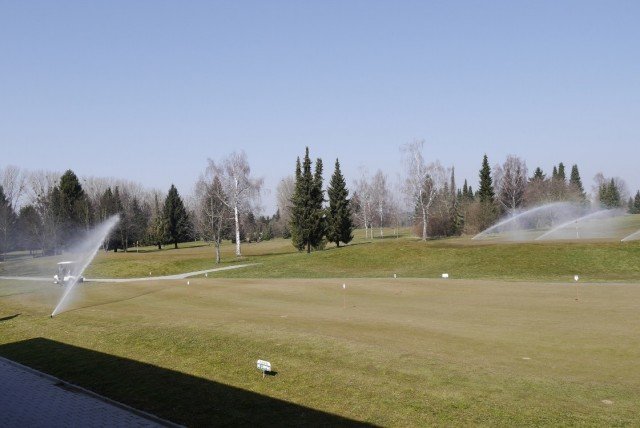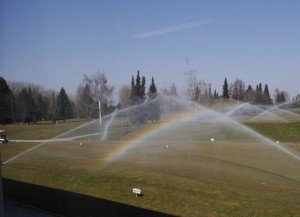
By Jessica Ahles
Special to The Citizen
Summer in Stuttgart has been a real scorcher this year consisting of multi-day heat waves and mercury readings climbing towards 99 degrees. During the seasonal peak where we’re reminded most of conserving our most precious natural resources, for the Stuttgart Golf Course, a sophisticated water management plan is keeping their “greens” green while at the same time making golf more sustainable.
“Although you can hardly tell [from the golf course], we’ve had lousy weather this season because there’s been no rain,” said Ed McCargo, golf course marshal. “But we have a great, hardworking crew, and as far as the work that has been done, this is one of the best courses around.”
Located in Kornwestheim, the course stretches across 7,000 yards over 300 acres. In an industry with a reputation for its heavy water use, the Stuttgart Golf Course staff puts water conservation into daily practice. Through strategic watering methods as well as innovative irrigation scheduling and monitoring technology, the golf course is making their process more precise and efficient.
“We want to do what we can to make sure we’re using water smartly and not just watering for the sake of watering,” said Chris Konik, golf course superintendent. “Even though the environment dictates how much [water] you’ll have to put down, you can look at yourself to make sure you’re not doing it carelessly and that you have a plan.”
Under the recent weather conditions, Konik said he and his staff have taken extra care to focus watering only where necessary, including the three main areas of play: tee boxes, fairways and greens. All of the roughs and external areas have been left in their natural state.
A digital program monitors course conditions as well as controls the irrigation system. By recording current weather conditions in combination with its own recent watering activity, the program can precisely determine how much water the course needs on an hourly basis. Konik may also fine-tune the system via a smartphone application.
“I can set the times, the individual sprinkler heads, I can make them do a 360-degree turn, or make them spray a certain area,” said Konik. “Decades ago, you’d have to take a truck, drag the hoses out there, and connect them to faucets around each hole. Now things are a lot more automated and efficient.”

Another daily device used to pinpoint specific areas needing some extra attention during dry spells is a wireless probe that reads the moisture content, temperature and salinity of the soil. The analysis can provide whether or not the area should be watered if too dry or aerated if too wet, to prevent disease.
In some cases, the crew may decide to use an aerator that injects highly pressurized water through the turf, effectively watering through its compacted layers while also improving needed air circulation for healthy grass.
Other water saving efforts involve cutting back the amount of mowing to reduce stress on the turf, installing aerated faucets throughout the course and club, and selecting tolerant grasses during a complete course renovation in 2011.
Their efforts haven’t gone unnoticed as the Stuttgart Golf Course became Audubon Cooperative Sanctuary certified in 2007 and a Green Boot certified organization in 2014 for their environmental stewardship. In addition to water conservation, the golf course practices other ecological initiatives in wildlife and habitat management, chemical and pesticide safety, environmental planning, as well as several education and outreach programs.
While course conditions are constantly changing, presenting new everyday challenges for him and his staff, Konik said conserving resources now will preserve the sport in the future.
“You can’t put something on a cycle and say this is what we’re going to do. It doesn’t work like that because this is a living, breathing environment,” said Konik. “You just have to water smartly, and by doing that, we’re providing a service to our soldiers and protecting our investment for the future of golf.”






